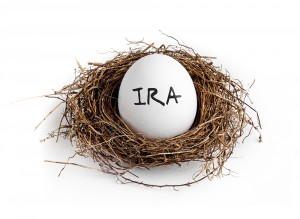 The third edition of Retire Secure!, Retire Secure! A Guide to Making the Most Out of What You’ve Got is set to be released in the coming months, (stay tuned for exact date). This revised Third Edition of Retire Secure! covers how to develop an estate plan that, among other goals, seeks to continue the tax-favored status of your retirement plans or IRAs long after your death using the stretch or inherited IRA—a strategy that has been, and continues to be, threatened by congress. Lange has a history of staying ahead of the curve, seeing trends and changes in the tax laws and developing strategies for his clients in advance to keep them on the right path toward their financial goals. He was among the first to predict the coming changes to the tax law on Roth IRAs and wrote a peer-reviewed article for The Tax Advisor (official journal of the AICPA) that would go on to win article of the year in 1998. He is continuing this trend in this Third Edition by laying out the possibility of the death of the stretch or inherited IRA as we know it, and providing avenues to reach the same or better outcomes for your family including the use of charitable remainder unitrusts, or CRUTS and life insurance.
The third edition of Retire Secure!, Retire Secure! A Guide to Making the Most Out of What You’ve Got is set to be released in the coming months, (stay tuned for exact date). This revised Third Edition of Retire Secure! covers how to develop an estate plan that, among other goals, seeks to continue the tax-favored status of your retirement plans or IRAs long after your death using the stretch or inherited IRA—a strategy that has been, and continues to be, threatened by congress. Lange has a history of staying ahead of the curve, seeing trends and changes in the tax laws and developing strategies for his clients in advance to keep them on the right path toward their financial goals. He was among the first to predict the coming changes to the tax law on Roth IRAs and wrote a peer-reviewed article for The Tax Advisor (official journal of the AICPA) that would go on to win article of the year in 1998. He is continuing this trend in this Third Edition by laying out the possibility of the death of the stretch or inherited IRA as we know it, and providing avenues to reach the same or better outcomes for your family including the use of charitable remainder unitrusts, or CRUTS and life insurance.
Lange offers up plenty of new content in this Third Edition including cutting edge analysis on the unique synergy between Roth IRA conversions and Social Security Maximization that his office has been developing. Using Social Security maximization techniques including spousal benefits like “Apply & Suspend,” and timing small appropriate Roth IRA conversions to take advantage of lower tax brackets in retirement can make hundreds of thousands of dollars of difference in your retirement portfolio… and he’s got the study to prove it.
Virtually every chapter of Retire Secure! contains recommendations, analysis, and case studies that have come from a deep understanding of tax law, estate planning, investing, and “running the numbers” and are proven to work.
Read this upcoming book and make the most out of what you’ve got for your retirement and your family’s future security.
 A nationally recognized IRA, Roth IRA conversion, and 401(k) expert, he is a regular speaker to both consumers and professional organizations. Jim is the creator of the Lange Cascading Beneficiary Plan™, a benchmark in retirement planning with the flexibility and control it offers the surviving spouse, and the founder of The Roth IRA Institute, created to train ad educate financial advisors.
A nationally recognized IRA, Roth IRA conversion, and 401(k) expert, he is a regular speaker to both consumers and professional organizations. Jim is the creator of the Lange Cascading Beneficiary Plan™, a benchmark in retirement planning with the flexibility and control it offers the surviving spouse, and the founder of The Roth IRA Institute, created to train ad educate financial advisors.
Jim’s strategies have been endorsed by The Wall Street Journal (33 times), Newsweek, Money Magazine, Smart Money, Reader’s Digest, Bottom Line, and Kiplinger’s. His articles have appeared in Bottom Line, Trusts and Estates Magazine, Financial Planning, The Tax Adviser, Journal of Retirement Planning, and The Pennsylvania Lawyer magazine.
Jim is the best-selling author of Retire Secure! (Wiley, 2006 and 2009), endorsed by Charles Schwab, Larry King, Ed Slott, Jane Bryant Quinn, Roger Ibbotson and The Roth Revolution, Pay Taxes Once and Never Again endorsed by Ed Slott, Natalie Choate and Bob Keebler.
Please complete the form below to receive reminders about the upcoming release of Retire Secure! Third Edition





